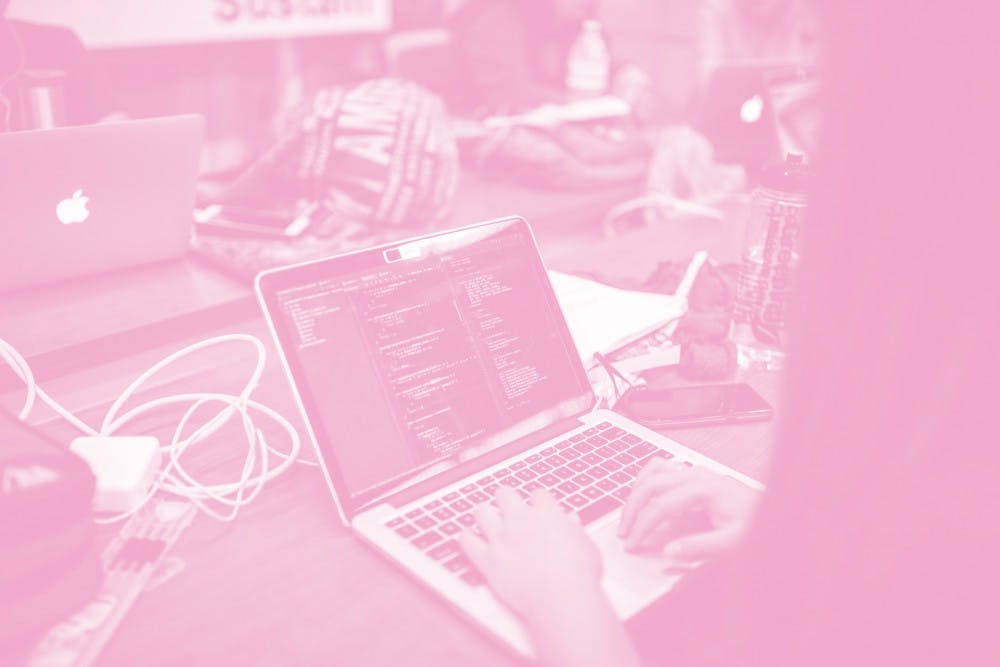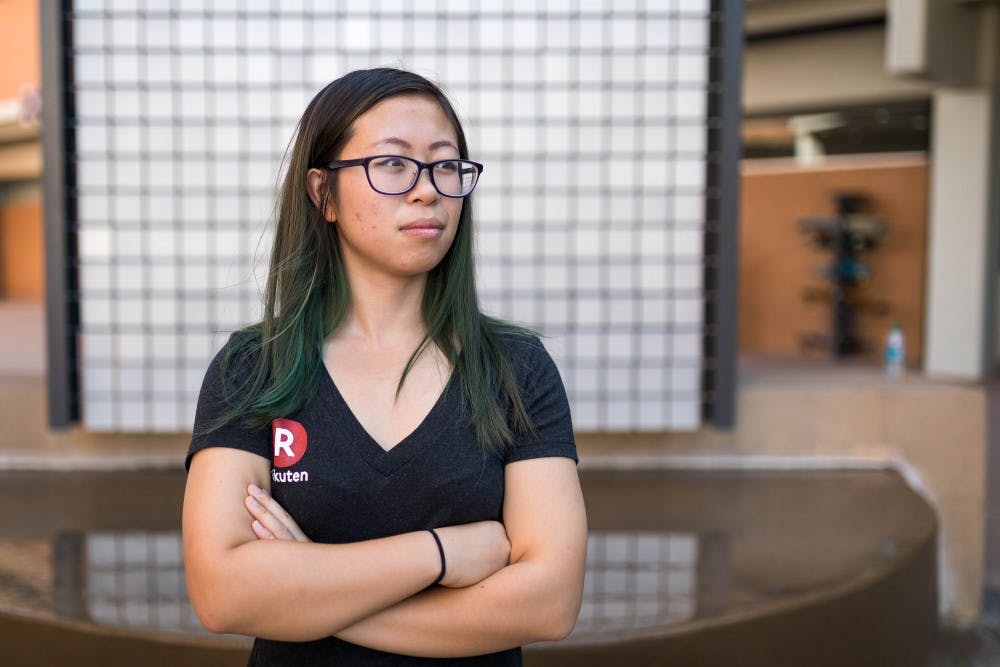The glass doors of Arizona State University’s Changemaker Central office open easily as I search the room for one student changemaker in particular: Diana Chen.
Chen is waiting for me at one of the long wooden tables towards the west entrance to the building. She’s dressed casually and looks just like any other student preparing for the upcoming semester. No one would guess at first glance that she had the opportunity to work as a software engineering intern for Google this past summer.
Chen was still interning for the company when a controversial internal memo was released. James Damore, a software engineer for Google, claimed the gender gap in software engineering is not “socially constructed,” but is due to biological differences between men and women.
“I was kind of an outsider to (the memo) because my department was really awesome,” Chen says. “Everyone was super nice, but you’re at a big company and there are going to be people like that. Just knowing those people are present it’s still hard to read those things and (have) people question why you’re there...it’s not like they said it to my face, but those things exist and bother you no matter what.”
However, Chen says she’s never personally felt discouraged or like she doesn’t belong in the field she’s chosen.
“For me, it’s not really a question if I would go into STEM (science, technology, engineering and math). Since middle school I’ve always really loved math and science,” Chen says. “My senior year of high school I took my first computer science class and then I was like, ‘Okay this is what I want to do.’”
Chen is a junior computer science major whose passion for coding has led her to become part of the thousands of women who choose STEM majors at ASU. In 2014 17,495 undergraduate students enrolled themselves in a STEM field major, according to a study released by the university. Of those students 5,708 (32 percent) were women.
To put things into perspective, those who chose a STEM major in 2014 would be graduating this May. According to the same study, 1,049 undergraduate women completed their degree program in 2014, but ASU expects those numbers to increase.
Although this study demonstrated less than half of STEM majors at ASU are composed of women, the numbers have grown exponentially in the last decade. During the 2002-2003 school year, only 447 undergraduate women obtained a STEM degree.
However, after graduation, finding (and keeping) a career in a STEM field may prove difficult for women like Chen who want to enter a white, male-dominated field.
The STEM Gender Gap
Million Women Mentors (MWM) is a national mentorship program that aims to keep young women “interested and confident” in STEM. The organization has nearly 2 million female mentees and nearly 850,000 completed mentorings across the country, according to its website.
Across the broad spectrum of STEM, only 26 percent of workers are female. Women compose over 20 percent of engineering graduates, but only 11 percent of practicing engineers are women, according to MWM.
In terms of the wage gap, however, jobs in STEM fields are actually beneficial for closing the difference between men and women’s salaries. Typically the difference between white women versus white men’s wages is about 77 cents to the dollar, but in STEM it’s about 92 cents to the dollar, according to MWM.
Janell Wiseton, the National Senior Advisor-STEM Connector for Million Women Mentors says it’s important to educate young women on the many different career paths they can take with a STEM degree.
Indeed, there’s been speculation in recent years that the “STEM pipeline,” or the phenomenon of large numbers of women dropping out of the STEM career path at a certain point, is no longer true, but instead it’s a lack of education and encouragement that keeps women from entering into STEM in the first place.
“We’re not clearly articulating to girls how these (STEM) careers can help people,” Wiseton says. “The number one reason all kids, girls or boys, do not follow a STEM career path is because they don’t know about them.”
In 2014, ASU partnered with the MWM program to encourage and assist female STEM majors at the university in completing their degrees. The partnership hoped to attract professionals from within the local community to join the Million Women Mentors’ mission, according to an ASU Now article published three years ago.
While Wiseton says the program still maintains friendly ties with ASU, the program lost its biggest supporter, the former Vice Provost and Dean of the College of Technology and Innovation, Mitzi Montoya after she left the university in 2015.
However, female STEM students are still taking advantage of other resources available to them at the university.
Want to read more? Pick up a copy of State Press Magazine on campus September 13 to read the full cover story.





